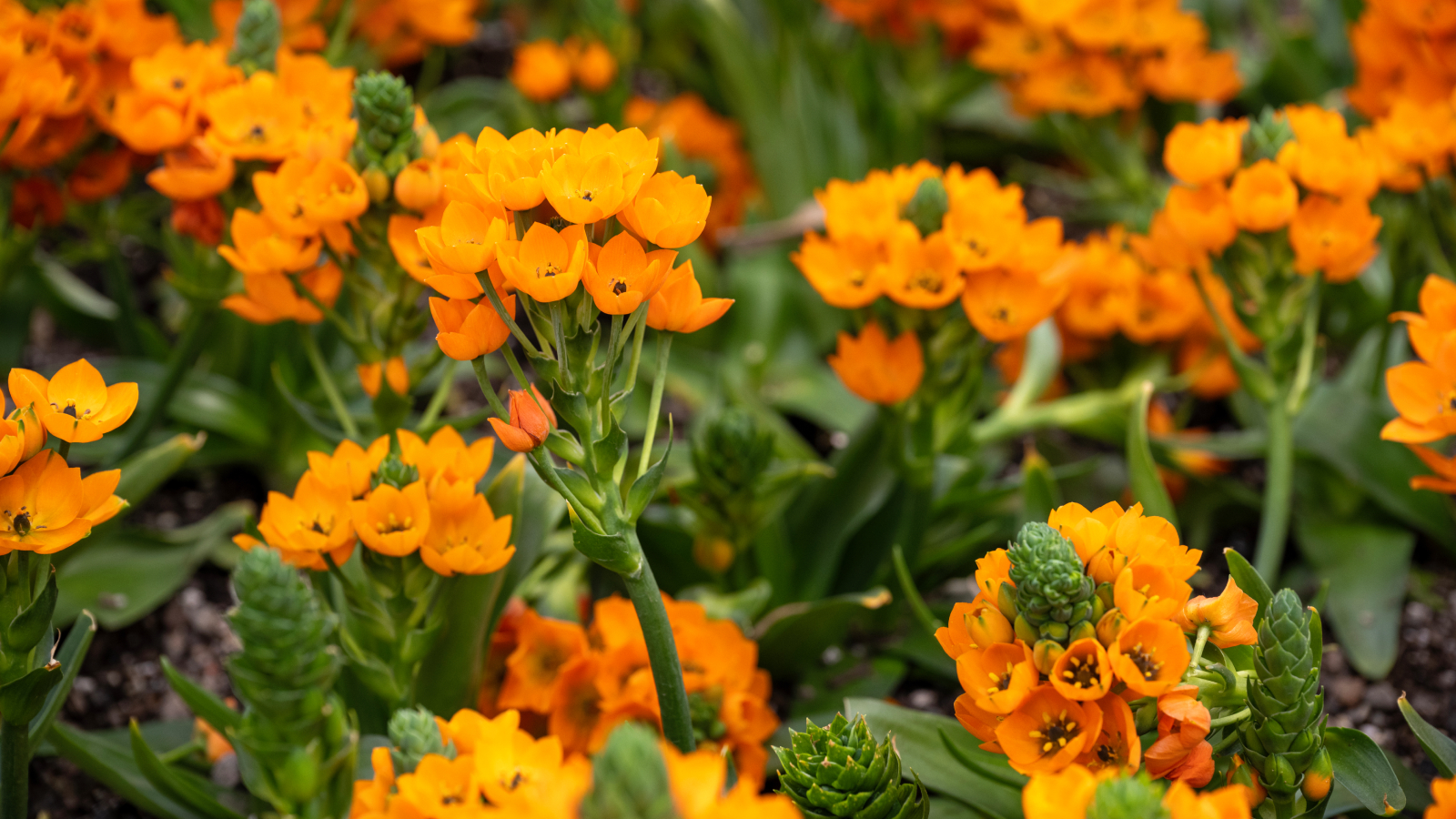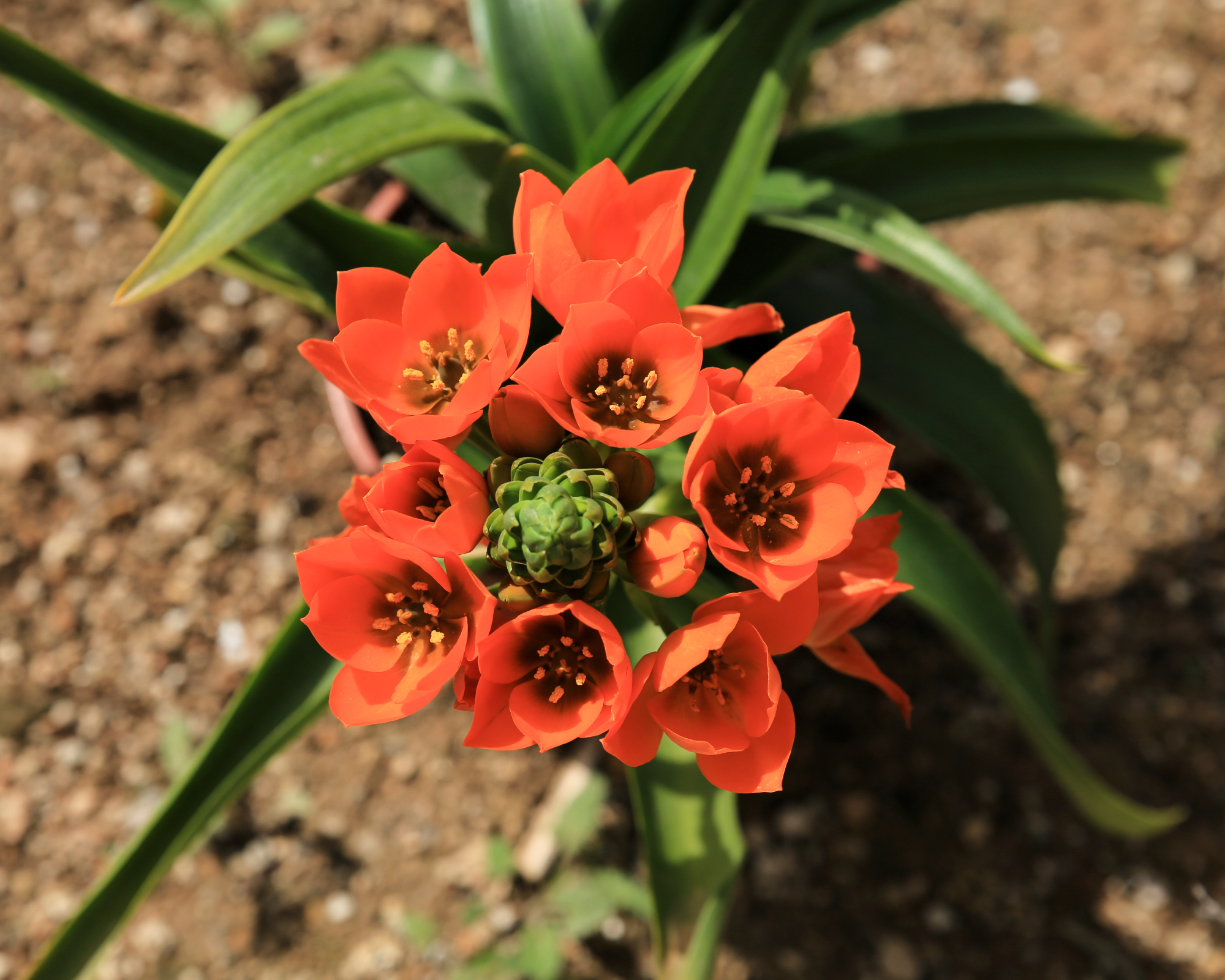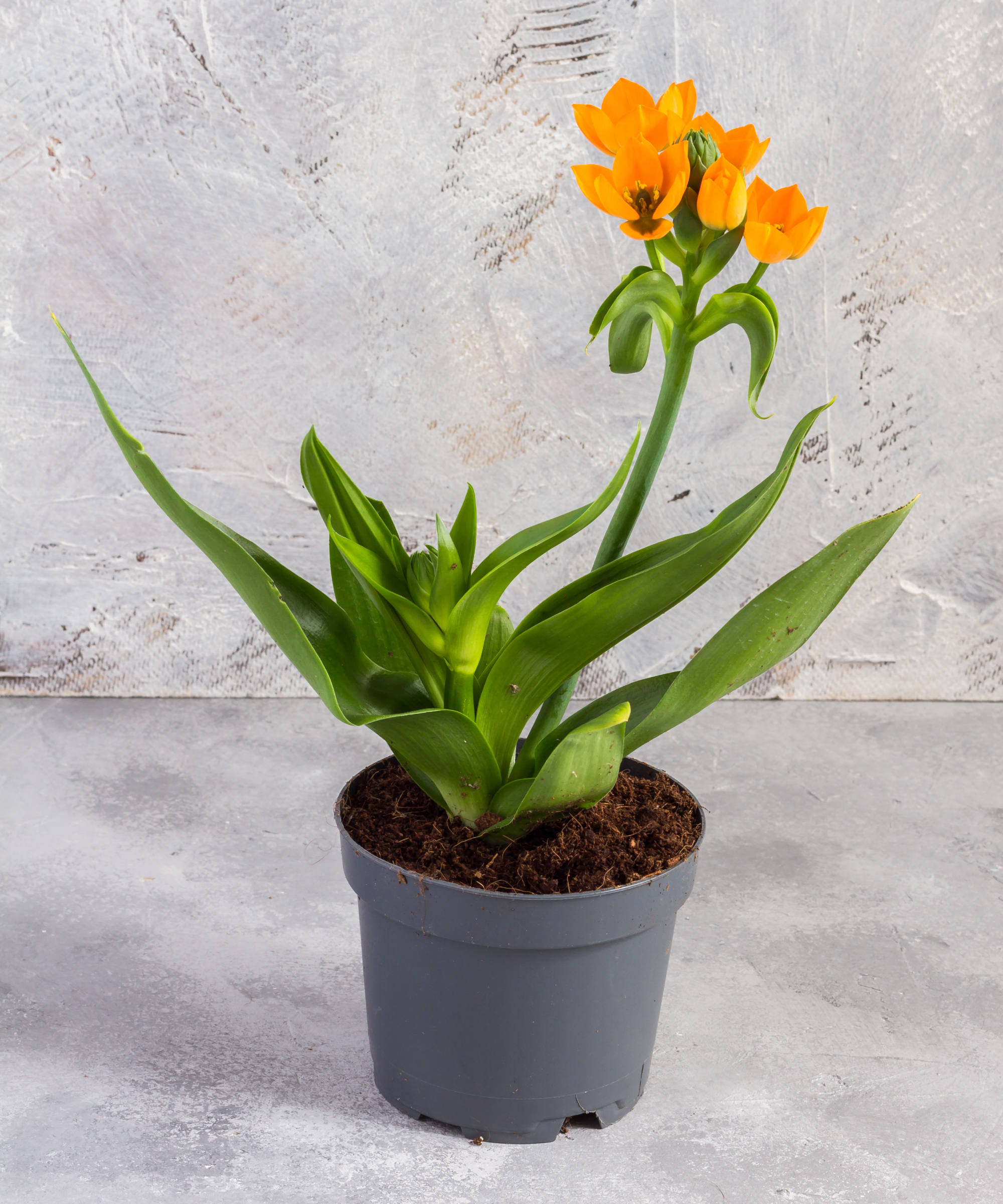Orange Star Plant Care Guide: How To Grow Striking Citrus-Colored Blooms Indoors Or Out
The orange star plant adds a bright, beautiful burst of color to interiors and garden beds alike. Learn everything you need to know to grow one yourself.


Liz Baessler
Quick Facts
Botanical name: Ornithogalum dubium
Height: 4 to 20 inches (10 to 50 cm)
Spread: 4 to 6 inches (10 to 15 cm)
Sun exposure: Full sun
Soil requirements: Light, well-drained
Hardiness zones: 7 to 11
When to plant: Fall or anytime indoors
Bloom time: Late winter to spring
The orange star plant (Ornithogalum dubium), also known as star of Bethlehem or sun star, is a flowering bulb that’s native to South Africa. This beautiful tropical plant produces stunning clusters of bright orange flowers.
Growing orange star plants is very rewarding and easy to do. They are typically grown as houseplants, but it is also possible to grow perennial orange star bulbs outdoors in USDA zones 7 through 11.
These flowering bulbs grow into compact plants, rarely reaching heights over a foot (30 cm). In the spring, they sprout tall stems that produce dazzling orange flowers that bloom over the course of one to three months.
Orange Star Plant Care
Orange star flower plant isn’t always easy to find, as it is a relatively new discovery in gardening, but it is easy to care for. Here’s what you need to know about this stunning South African flowering bulb.
Light
Lighting is crucial to good orange star plant care. These flowers need a spot, whether outside or inside, with full sun to thrive. This means at least six hours of bright, direct light per day.
If you are growing an indoor orange star plant in a container, set it near a bright window. Use grow lights if you cannot provide adequate lighting.

Water
Keep bulbs moist but not waterlogged. Water your orange star flower regularly but don’t let the bulb and roots get soggy. The soil and container should drain very well. Water less, if at all, during dormancy, which is the hottest part of summer for this plant.
Sign up for the Gardening Know How newsletter today and receive a free copy of our e-book "How to Grow Delicious Tomatoes".
Temperature & Humidity
The orange star plant is native to a warm but dry region. Though this appreciates warmth but will go dormant during the hottest temperatures in summer. Since it is native to a dry climate in South Africa, this plant doesn’t need a lot of humidity.
Soil
Orange star flowers must have soil that drains well to avoid bulb and root rot. The best soil for bulbs is a light, sandy soil.

Fertilizer
A flower-boosting houseplant fertilizer can help you prolong the blooms on an orange star flower. Use it as directed during blooming. Use fertilizer more sparingly the rest of the year.
Problems, Pests & Diseases
There aren’t any known pests or diseases of the orange star plant, so thankfully it’s easy to keep bulbs healthy. Orange stars are also resistant to damage from rabbits and deer when grown outdoors.
Pruning
Orange star flower doesn’t require a lot of pruning or trimming. It grows small and is compact. You can trim off dead foliage as it fades, and deadhead individual flowers as they fade.
Once all the flowers have passed, remove the entire flowering spike from the main body of the plant. This may seem drastic, but the plant can handle it.
Don’t cut back foliage, continue to water your plant, and let the leaves die back on their own. This gives the plant the chance to store up energy in its bulb for the next growing season.
Propagation
As with other bulb plants, you can propagate orange star flowers by removing offsets. Divide flower bulbs for propagation during the dormant period. Dig up the bulb and look for offsets you can easily remove and replant.
Repotting
Proper orange star plant indoor care includes regular repotting. A good general guideline is to repot these orange flowering houseplants every two to three years.
Signs a plant needs a new, slightly larger pot include poor growth and roots emerging from the bottom of the container.

Overwintering
Note:
All parts of the orange star plant are toxic if ingested. Take care when growing these plants around young children or pets.
Orange star plants grow from bulbs each spring, but their bulbs can easily rot if they become waterlogged.
If you plant your bulbs in a sandy or rocky area and you live in zone 7 or warmer, the bulbs will probably be fine overwintering outside.
Otherwise, to prepare and store bulbs for winter, dig up orange star plants in the fall, store the bulbs indoors, and then replant them in the spring.
Frequently Asked Questions
Do Orange Star Plants Come Back Every Year?
Orange star plant is technically a perennial, but it doesn’t always rebloom or reliably return in garden beds.
Can an Orange Star Plant be Planted Outside?
Yes, orange star plant is hardy in zones 7 through 11, so you can grow it outside in these areas. If you live in a colder growing zone and plant one outside, dig up the bulb in fall and store it for winter. Replant in spring to keep it going.
Do You Deadhead Orange Star Flowers?
Yes, you can deadhead star flowers after the blooms are spent. Remove the entire flower spike when all the flowers have faded. Do not remove the foliage right away, as it will continue gathering energy while it is still green.
This article features products available from third party vendors on the Gardening Know How Shop. Keep in mind that our plant inventory is limited—so if you’re thinking of purchasing, don’t wait!

Mary Ellen Ellis has been gardening for over 20 years. With degrees in Chemistry and Biology, Mary Ellen's specialties are flowers, native plants, and herbs.
- Liz BaesslerSenior Editor
